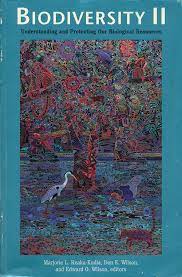Celebrating International Day of Women and Girls in Science through the Library
10 Feb 2023|
- Library, Arts & Archives
Climate change is perhaps the greatest threat to life on earth. Climate scientists are producing vital work to help us to understand, respond to, and reduce the impact of our changing environment. Yet in climate science, women remain drastically underrepresented. Analysis of the 100 most influential climate science papers published 2016-2020 reveals that women make up less than one-quarter of the authors and only 12% of the research leads.[1] This International Day of Women and Girls in Science, the Library is exploring our collections to celebrate some of the women who have led the way through the male-dominated field of climate science.
For the general reader
Some of the most interesting and powerful work on the climate and environment has been conducted by women:

Rachel Carson
Silent Spring
Rachel Carson was an American marine biologist and conservationist; she is lauded as one of the early leaders of climate and environmental science. Carson’s 1962 book Silent Spring outlined the danger to wildlife and biodiversity posed by the widespread use of pesticides, bringing this to the attention of policy makers and the general public. Silent Spring was exceptionally influential, and led to a fundamental shift in the US government’s and public’s attitudes toward and use of pesticides. It prompted policy changes and, in 1972, a ban on the domestic use of the pesticide DDT. In 2012, Silent Spring was designated a National Historic Chemical Landmark by the American Chemical Society for its role in the development of the modern environmental movement.[2]
Find it in the Library: D18e CAR:Sil

Elizabeth Austin
Treading on Thin Air
In Treading on Thin Air, atmospheric physicist Elizabeth Austin reveals how the climate is intimately tied to our daily lives. As the climate changes, the effects and impacts of weather on humans, society and the planet are changing drastically. Treading on Thin Air seeks to demystify the processes of weather and climate systems, and help to understand the real-world impact of climate change.
Find it in the Library: D18 AUS:Tre
Textbooks
Think all your textbooks are written by men? Think again!

Marjorie L. Reaka-Kudla
Biodiversity II
A Professor in the Department of Biology at the University of Maryland, Marjorie L. Reaka-Kudla’s research centres on biodiversity and extinction, in particular regarding coral reefs and Crustacea. Some of this work culminated in Biodiversity II, a volume co-edited by Reaka-Kudla, D.E. Wilson and E.O. Wilson. The book, as set out in its introduction, demonstrates that the vital importance of studying biodiversity as a part of climate science: “the potential benefits of knowing and conserving [the earth’s] biodiversity are too great and the costs of losing it are too high”.
Find it in the Library: D18 REAK:Bio

Kerry H. Cook
Climate Dynamics
Kerry H. Cook is a Professor at the University of Texas at Austin’s Department of Geological Science whose work focuses on predicting and understanding climate change and climate variability worldwide. Her research makes use of numerical models along with observational analysis to improve our understanding about how features and processes at the earth’s surface interact with atmospheric circulation and precipitation fields. Climate Dynamics is an introduction to the earth’s climate system, intended to provide undergraduates a foundation for observing and analysing changes in the climate.
Find it in the Library: D18 COO:Cli

Zinta Zommers
Resilience: The Science of Adaptation to Climate Change
Zinta Zommers is a specialist in climate change adaptation and risk management. Her work aims to reduce vulnerability to climate shocks by strengthening early warning and anticipatory action systems. She is a lead author of the Intergovernmental Panel on Climate Change, and has held a variety of roles with the UN, including as part of the Secretary-General’s climate change team and a member of the UN Chief Scientist’s Office.[1] Edited by Zommers and Keith Alverson, Resilience: The Science of Adaptation to Climate Change analyses the ongoing attempts to adapt to the impact of climate change, and evaluates how we can ensure climate security for the future.
Find it in the Library: D18 ZOM:Res
Looking to the future
St Edmund Hall is proud to be at the forefront of environmental sustainability initiatives across the colleges of Oxford. As part of our commitment to being one of the greenest colleges in Oxford, the Hall has launched a range of sustainability initiatives, including the publication of a 10-year Environmental Sustainability Strategy. In the Library, we have worked hard to improve our sustainability and decrease our impact on the environment. For example, we have successfully reduced the amount of printing by encouraging people to ‘think before you print’, and a new waste and recycling station was an instant hit with students, library staff, and cleaning staff!

This term, Professor Baroness (Kathy) Willis, Principal of St Edmund Hall, has chaired the first of a new Hall seminar series: ‘Conversations in Environmental Sustainability: beyond greenwashing’. This inaugural session brought together industry and academic leaders to ask ‘Where are the innovations in renewable energy?’. Keep your eyes peeled for the next instalment!
Professor Willis’ own research focuses on the relationship between long-term ecosystem dynamics and environmental change. Her extensive publications include The Evolution of Plants, now in its second edition, and also popular science books such as Botanicum and Plants: From Roots to Riches.
Find Kathy’s books in the Library: SEHF/WIL
Looking to the past
In 1856, a woman named Eunice Foote became the first person to suggest that increased levels of carbon dioxide in the atmosphere “would give to our earth a high temperature”. Foote’s paper ‘Circumstances affecting the heat of the sun’s rays’ (published in The American Journal of Science and Arts) proved that heat from the sun is absorbed by water vapour and carbon dioxide. This discovery underpins our understanding not only of what is known as ‘the greenhouse effect’, but also of climate and weather systems more widely. However, it was not until over 150 years later that this was correctly attributed to Foote. Until the early 2010s, John Tyndall was understood to have first made this discovery in 1859. Foote’s gender is undoubtedly part of the reason why her work was forgotten for such a long time. In fact, at the 1856 meeting of the American Association for the Advancement of Science, Eunice did not present her own paper, instead having to defer to Joseph Henry (first Secretary of the Smithsonian Institution).

Today, though, we can celebrate Foote’s remarkable work, and use the story of her forgotten discovery as a cautionary tale. Gender equality in the sciences has come a long way from Foote’s nineteenth-century culture – where the scientific learned societies barred women from entry. But even today, less than 30% of scientific researchers worldwide are women; and this falls to 12% in the Reuters Hot List of the world’s leading 1000 climate scientists. The work of initiatives such as International Day of Women and Girls in Science is far from over.
Find out more about Eunice and why her work was forgotten via https://royalsocietypublishing.org/doi/10.1098/rsnr.2018.0066
Read more about Eunice and her work in Alice Bell’s Our Biggest Experiment: An Epic History of the Climate Crisis.
Find it in the Library: D18 BEL:Our
Category: Library, Arts & Archives